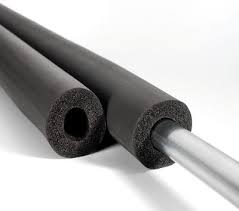
Pipe Freeze Protection
Every pipe or vessel is subject to heat loss when its temperature is greater than ambient temperature. Thermal insulation reduces the rate of heat loss but does not eliminate it. Trace heating maintains the temperature above freezing by balancing heat lost with heat supplied. Normally, a thermostat is used to energise when it measures temperature falling below a set temperature value - usually between 3°C and 5°C and often referred to as the 'set point'. The thermostat will de-energise the trace heating when it measures temperature rising past another set temperature value - usually 2°C higher than the set point value.
Where water storage is likely to be subject to temperatures below freezing, lagging and heating maybe required.
In areas that, under normal circumstances, have ambient temperatures well above freezing then lagging and trace heating will not be required. In these instances it is the responsibility of the occupier to ensure that the ambient temperature within the building is always kept above freezing.
This is particularly important if the property is left unattended for a long period of time in the winter and we would advise that the heating is left on a ‘frost' setting whilst unoccupied.
Specifications:
SSR – Freeze Protection – External and Internal Pipe Heating
|
Available for hazardous area applications – Zone 1 & 2 |
|
|---|---|
| Output Wattage range (w/m) @ 5C | 10, 15, 25,30 |
| Maximum maintain temperature ( energized) | 65°C |
| Maximum exposure temperature (de energized) | 85°C |
| Minimum installation temperature | -40°C |
| Working voltage range | 110V- 120V / 220-240V |

